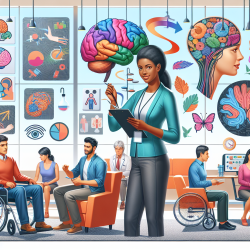Introduction
In the realm of special education and audiology, understanding the challenges faced by hearing-impaired (HI) individuals during TV listening is crucial. The research article "TV Listening and Hearing Aids" offers valuable insights into the experiences of HI individuals with and without hearing aids (HAs) and provides a foundation for practitioners to enhance their skills and interventions.
Key Findings from the Research
The study, conducted through an online survey among 515 HI individuals aged 50 and above, revealed significant differences in TV listening experiences between HA users and non-users. HA users reported watching TV for an average of 6 hours and 10 minutes daily, which is 57 minutes longer than non-users. Despite the extended viewing time, HA users encountered fewer difficulties, suggesting that HAs alleviate some of the challenges associated with TV listening.
However, over 39% of HA users still faced frequent issues, indicating room for improvement in HA technology and user adaptation. The study highlighted that difficulties increased with the degree of self-reported unaided hearing disability and were more pronounced among female participants. Interestingly, those with carpeted floors reported fewer difficulties, pointing to the potential impact of room acoustics on TV listening experiences.
Implications for Practitioners
For practitioners, these findings underscore the importance of personalized interventions and continued research. Here are some actionable steps practitioners can take:
- Encourage HA Usage: Educate patients on the benefits of consistent HA use during TV watching to improve their listening experience.
- Explore Room Acoustics: Advise clients to consider room modifications, such as adding carpets, to enhance sound quality and reduce reverberation.
- Promote Closed Captioning (CC): Raise awareness about the benefits of CC as a tool to aid understanding, especially for those who struggle with speech intelligibility on TV.
- Investigate Gender Differences: Conduct further research to understand why female participants report more difficulties and tailor interventions accordingly.
Encouraging Further Research
The study's exploratory nature opens avenues for further research to develop targeted interventions. Practitioners are encouraged to delve deeper into the following areas:
- Investigate the impact of different HA technologies on TV listening experiences.
- Explore the role of room acoustics and environmental factors in enhancing or hindering TV listening.
- Examine the psychological and social factors contributing to gender differences in reported difficulties.
Conclusion
The research on TV listening and hearing aids provides a valuable framework for practitioners to enhance their skills and improve the quality of life for HI individuals. By implementing the study's findings and pursuing further research, practitioners can develop more effective strategies to support their clients.
To read the original research paper, please follow this link: TV listening and hearing aids.










